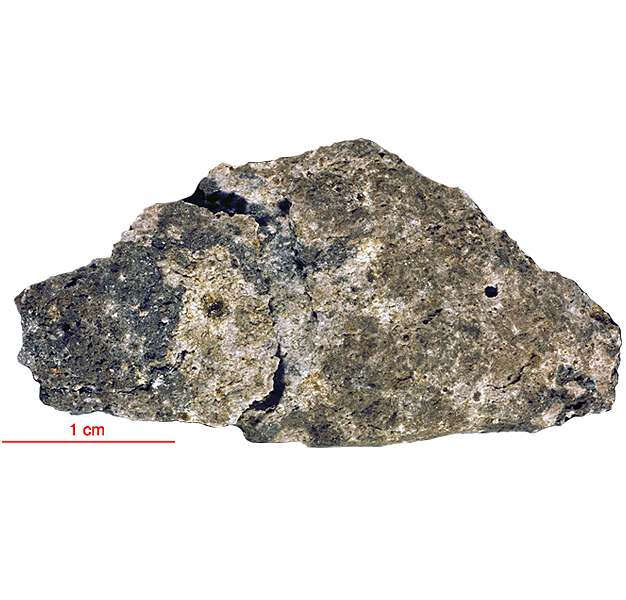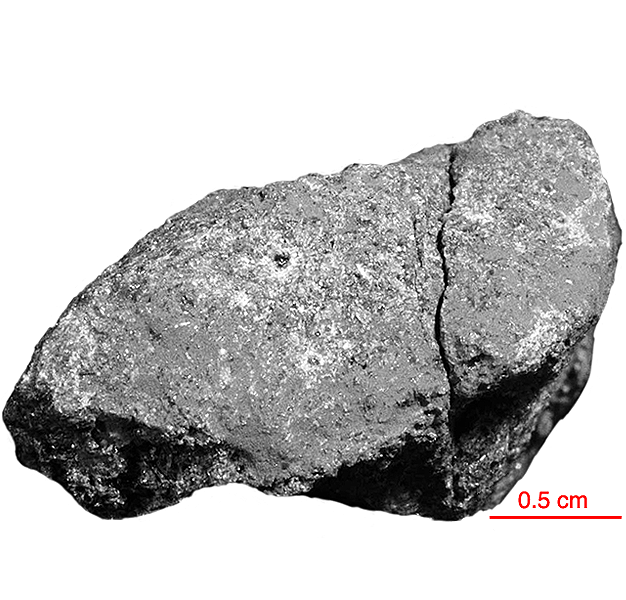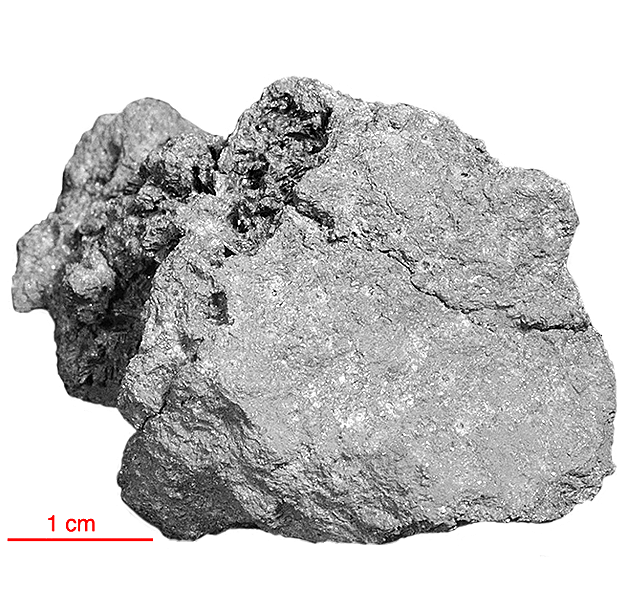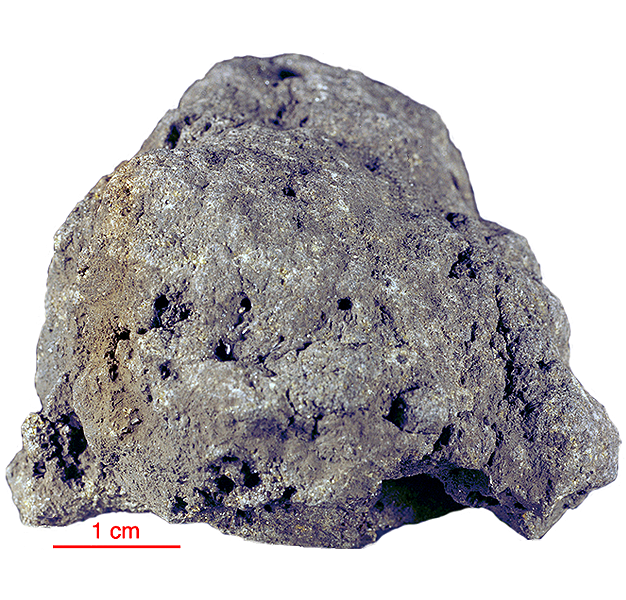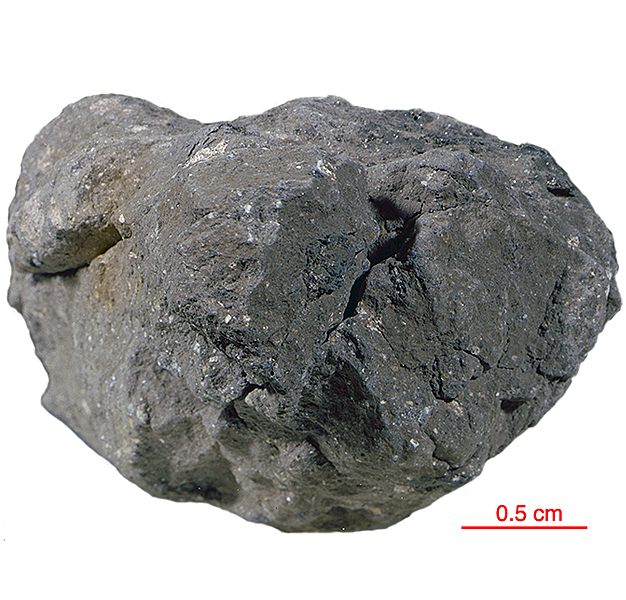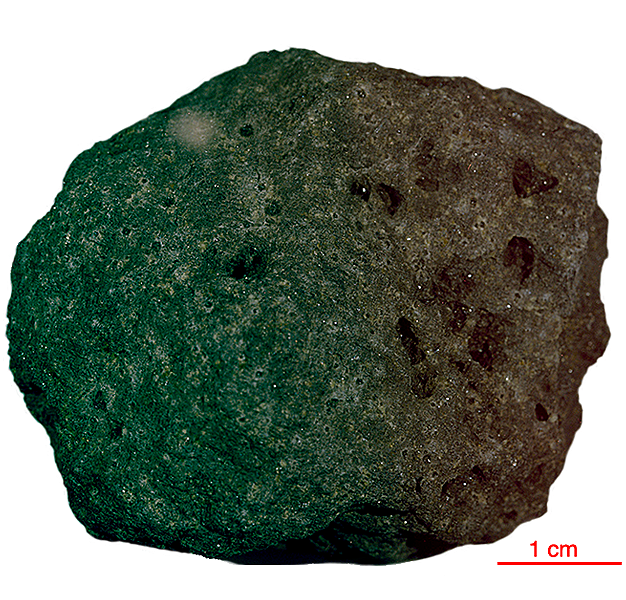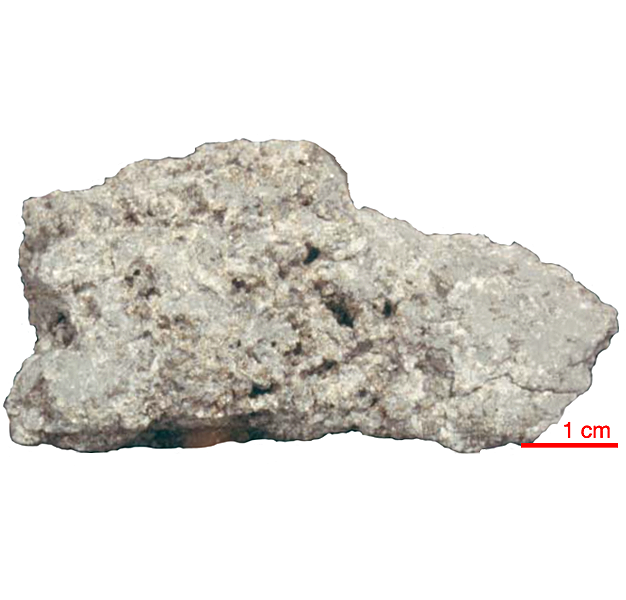
Fact sheet
Olivine basalt 12036 looks a lot like 12035 and has the same high modal olivine and pyroxene and the same chemical composition (within sampling error). 12036 is a coarse-grained cumulate containing abundant amounts of olivine, pigeonite, augite and chromite as cumulus phases. The pyroxene is both twinned and compositionally zoned. Olivine poikilitically encloses pyroxene megacrysts up to 5mm in length. 12036 has also been described as a feldspathic peridotite.
The megacrysts are incorporated into a second stage assemblage of olivine, plagioclase, pyroxene, spinel and accessory minerals. Residual glass with high silica and high potassium is found interstitially and is associated with K-feldspar, fluorapatite, whitlockite and baddeleyite.
The sample weighed 75 grams before analysis. It has not been dated.
Further details of this and other Apollo samples are here: http://curator.jsc.nasa.gov/lunar/
Apollo 12 returned 34 kilograms of samples, including 45 rocks, samples of lunar 'soil', and several core tubes that included material from as much as 40 centimetres below the lunar surface.
Apollo 12 rocks were almost all basalts, with only two breccias in the returned samples. The basalts at the Apollo 12 site formed 3.1 to 3.3 billion years ago, roughly 500 million years later than the Apollo 11 basalts. Overall, there is much less of the element titanium in the Apollo 12 samples than in the Apollo 11 samples, which explains the more reddish colour of this region. The differences in age and chemical composition between the Apollo 11 and Apollo 12 samples demonstrate that mare volcanism did not occur as a single, Moon-wide melting event.
Apollo 12 was launched on 14 November 1969.

